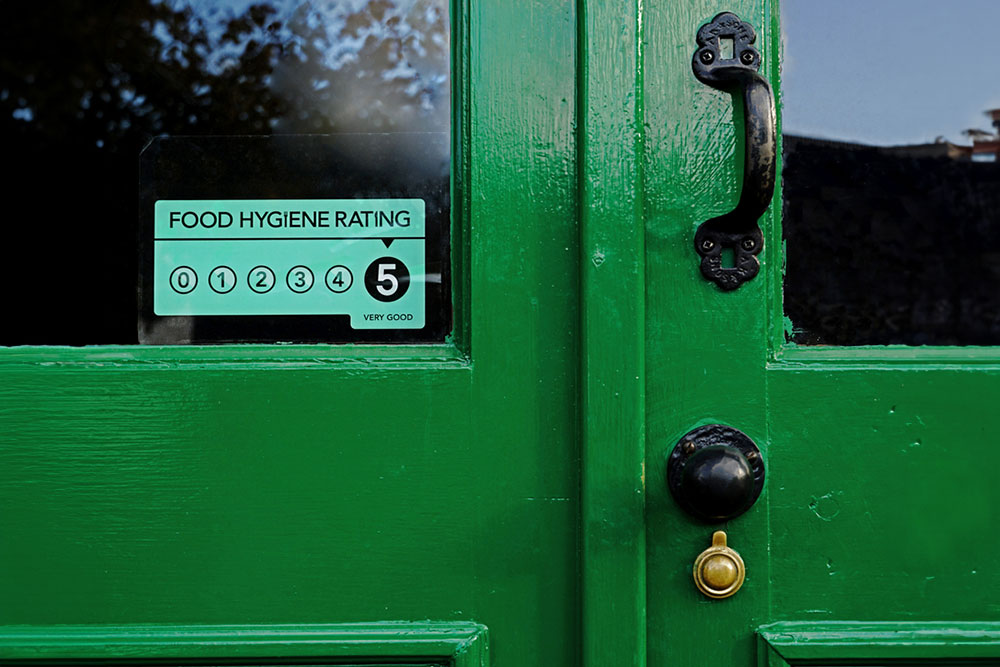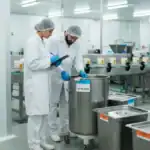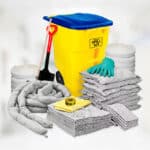
The Food Hygiene Rating Scheme gives consumers a good idea of a company’s approach to food hygiene. With this knowledge, they can decide where to dine or buy food. Businesses that achieve high ratings can also use the scheme to attract customers and earn consumer trust.
But both parties may misunderstand the scheme. It’s not as straightforward as it first appears.
Read our guide to learn more about the scheme, how businesses are rated and what the score tells consumers.
Food Hygiene Inspections
The Food Standards Agency (FSA) runs the rating scheme with local authorities (LAs) across England, Wales, and Northern Ireland. (Food Standards Scotland operates its own similar rating scheme.)
The FSA rates almost all businesses where food is sold, supplied or eaten, including:
- Restaurants
- Pubs
- Cafes
- Supermarkets
- Hotels
- Schools, hospitals and care homes
Local partnerships give the FSA more boots on the ground to inspect these wide-ranging places. Food safety officers dispatched from the local authority check three areas as part of an inspection:
- Hygiene across all stages of food handling, preparation, cooking, cooling, re-heating and storing
- Cleanliness and suitability of the food preparation area, including lighting, ventilation and pest control
- Food safety management systems or how the business guarantees food is safe
- Staff training and overall compliance with food safety laws
The officer returns this information to the FSA, which issues a food hygiene rating based on the findings. A business receives a new rating after each inspection, which the local authority schedules.
Food Hygiene Courses
Equip food workers with essential training for their role. Our online food hygiene courses provide an understanding of food safety, HACCP systems and cross-contamination. All courses award independently recognised certificates for proof of training.
How Often Businesses are Inspected
The local authority plans inspections each year. LAs increase inspections according to the potential risk to public health.
High-risk food businesses can expect an inspection every three to six months. Low-risk companies can go up to two years between inspections, although this is extreme.
Food businesses are considered high risk because of the food they sell (uncooked and unpackaged meats or fish, for example) or because of failings identified in previous inspections.
What the Food Hygiene Rating Checklist Proves
As the FSA explains, a food hygiene rating is a snapshot. It strongly indicates a business’s overall food hygiene approach but can’t prove long-term compliance.
Inspectors can only verify hygiene standards on-site, and standards may slip between inspections. The food hygiene rating checklist inspectors work through is also fixed. Subsequent ratings only reflect hygiene and food safety standards. They do not consider overall food quality or customer service.
The FSA also exempts certain food businesses from inspection, so you may purchase food somewhere without a rating. Businesses spared inspection include:
- Low-risk businesses selling packaged goods that don’t need to be refrigerated, such as newsagents or chemists
- Businesses that provide childminding or at-home care services
What Do the Food Hygiene Rating Scheme Scores Mean?
The FSA issues ratings on a six-point scale from zero to five. These are:
0 – Urgent improvement is required
1 – Major improvement is necessary
2 – Some improvement is necessary
3 – Hygiene standards are generally satisfactory
4 – Hygiene standards are good
5 – Hygiene standards are very good
Ratings are based on the inspector’s report, which reviews hygiene, cleanliness and overall food safety.
If you are a business owner, you should receive a detailed inspection report that explains your rating and business performance in the three inspection areas.
Low Ratings
A low score is not an automatic shutdown. Suppose a business scores one or lower on the rating scale. In that case, food safety officers will intervene primarily in an advisory role. They will attempt to help the business make the necessary improvements. However, there are exceptions and food safety officers will close part or all of a company if they find an immediate risk to public health.
Checking a Business’ Food Hygiene Rating
Consumers can check a business’s food hygiene rating online or on the premises.

Display Sticker
Food hygiene rating scheme display stickers are compulsory in Wales and Northern Ireland. Rating stickers must be unobstructed and easily noticeable for consumers, with most businesses displaying them in the front window or door.
Businesses in England must follow similar guidelines when advertising their rating, but the display is optional.
Employers who receive a low rating may hide it, hoping consumers won’t notice. However, hiding a low rating has two drawbacks. Firstly, consumers may assume any business without a display sticker is concealing a low score and choose to go elsewhere. Secondly, consumers can quickly look up ratings online.
Online
You can check a business’s food hygiene rating online. The FSA manages this online directory, which lists all current ratings, even if a company prefers to keep it hidden.
Difference Between Online Ratings and Display Stickers
You may notice a difference between a business display sticker and an online rating. Differences are usually caused by one of two reasons:
- The business has appealed its rating and is awaiting a ruling
- The LA has not yet updated the online rating
LAs can take up to 28 days to update online ratings, making legitimate inconsistencies possible.
Some inconsistencies result from misconduct, however. Businesses have been caught manipulating consumers by displaying a false higher rating. If you suspect wrongdoing, it’s better to use the online rating. It may be slow to update, but it is managed directly by the FSA.
How to Improve Food Hygiene Ratings
A high hygiene rating can win consumer confidence and attract more business. However, you can only score four or higher if you perform well across all inspection areas. Staff can’t do this without understanding and following effective food safety systems or hygiene standards. And incomplete training records will leave you with a rock-bottom rating and a visit from the food safety officer.
Our online food hygiene courses cover everything employees need to know to work in the food industry and maintain food safety throughout handling, preparation, and selling. You can be confident that your staff will show the necessary skill, care and concern the next time your business is inspected.





















